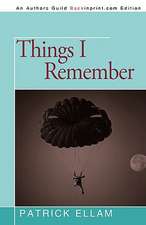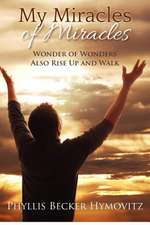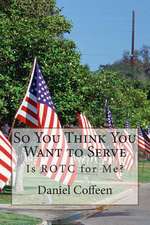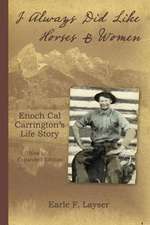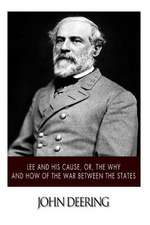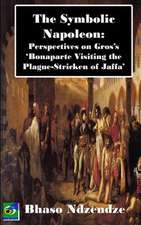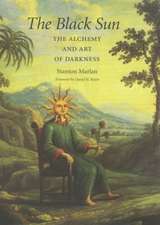Aleister Crowley
Autor Tobias Churtonen Limba Engleză Paperback – 12 sep 2012
For 100 years, Aleister Crowley's true achievements have been suppressed and his true character defaced in a campaign of vilification unparalleled in British history. Until now, Crowley's life has not been written-it has been written over.
Tobias Churton is a world authority on Freemasonry, Rosicrucianism, and Gnosticism. In writing Aleister Crowley, he enjoyed complete access to all Crowley's restricted papers, unpublished letters and personal diaries kept in a trust at London's Warburg Institute and in the Ordo Templi Orientis archives. Ninety percent of the authentic material here has never before been published.
| Toate formatele și edițiile | Preț | Express |
|---|---|---|
| Paperback (1) | 205.24 lei 3-5 săpt. | +35.84 lei 4-10 zile |
| Watkins Publishing – 12 sep 2012 | 205.24 lei 3-5 săpt. | +35.84 lei 4-10 zile |
| Hardback (1) | 108.03 lei 24-36 zile | |
| Inner Traditions/Bear & Company – 17 iul 2014 | 108.03 lei 24-36 zile |
Preț: 205.24 lei
Nou
39.28€ • 40.52$ • 33.24£
Carte disponibilă
Livrare economică 11-25 februarie
Livrare express 25-31 ianuarie pentru 45.83 lei
Specificații
ISBN-10: 1780283849
Pagini: 474
Ilustrații: col. Illustrations
Dimensiuni: 152 x 231 x 33 mm
Greutate: 0.82 kg
Editura: Watkins Publishing
Notă biografică
Extras
An Old Master
THE ARTIST IN THE BEAST
Emily Bertha Crowley died in Eastbourne, England, on 14 April 1917 while her only son was far away at her half-brother William’s son’s citrus farm at Titusville, Florida. Crowley was back in New York when the news reached him, anticipated by a dream two days earlier that left him extremely distressed. He had never got close to his mother, but her actual death left him feeling helpless and lonely. So much of his attitude had conspired to goad her religious rectitude; what was the point now?
It was, I think, Emily’s death that initiated an unexpected development in the poet, for by the end of 1918, Aleister Crowley was painting with a will. We can but guess as to whether he had pondered his mother’s now vanished, sensual, artistic side, or whether he recalled a painting she had made of Lawrence and Birdie Bishop’s Florida farm on a visit long ago. Was it that, without thinking at all, Crowley took on the mantle of his unfulfilled mother’s unfulfilled talent and found in it, through his endurance of countless empty days and nights in America, a link to her and to his seldom plummeted, deepest feelings? Crowley was a master of words, but there are some feelings words cannot express.
The earliest photograph of Crowley painting was taken at Decatur, Georgia. His idiosyncratic little tuft of hair, an erection on his shaven head, looks like an additional brush atop his bulky, muscular frame. His weary face encapsulates the spirit of solitude that was his.
In some respects it is surprising it took Crowley so long to pick up pallet, easel, and brush. He had been introduced to decadent artistic circles when, in 1897, he had become undergraduate lover to Trinity College Cambridge graduate Herbert Charles Pollitt (1871-1942), known as “Jerome,” a connoisseur, dancer, and actor for whom Pollitt’s close friend Aubrey Beardsley (1872-1898) had designed a personalized book plate in 1895-96, while contributing his famed artwork for the Yellow Book magazine.
When Crowley published his own decadent poetry book White Stains (1898), he followed Beardsley’s example and employed the services of principal decadent publisher, Leonard Smithers (1861-1907). Smithers found an Amsterdam printer for Crowley’s outrageous verses.
In his last year at Cambridge (1898), Crowley became close friends with Gerald Festus Kelly (1879-1972), a young man who knew he wanted to paint. Crowley was impressed by Kelly’s artistic seriousness and through all his worldwide travels of 1900–1902, kept in touch as the younger man graduated from Cambridge and, inspired by James McNeill Whistler, went to Paris to become an artist, a career that, in Crowley’s view, ground to a halt in 1930 when Kelly accepted election as a Fellow of the Royal Academy, London, with all the respectability that position could muster, including being the British Royal Family’s favorite artist. Having become respectable, Kelly lost Crowley’s respect absolutely.
But it had not always been like that. In early November 1902, fresh in body but feverish in spirit after an audacious, but failed attempt to climb K2 in the Karakoram Range, Crowley entered Montparnasse, Paris--the first time since 1899. He had not seen Kelly since 1900.
Gerald Kelly introduced Crowley to his circle of artistic friends at Le Chat Blanc, 93 Rue d’Odessa, near the Montparnasse railway station. The Montparnasse district, on the south bank of the Seine, with its bohemian cafés and “apaches” (street roughs of both sexes) would become Crowley’s artistic lodestone until 1929 when the French state was persuaded the “Patriarch of Montparnasse” was a nuisance to its interests. As Crowley explained in his 9 January 1930 letter to Karl Germer, it was in Montparnasse that he was introduced to Auguste Rodin (1840-1917).
Crowley publicly championed the cause of Auguste Rodin’s controversial sculpture Balzac. Crowley and Rodin collaborated on a book combining Rodin’s watercolors with Crowley’s sonnets of reflection on the sculptor, the poet’s French assisted by Marcel Schwob, the Jewish writer who helped Wilde put his English-forbidden Salome into French.
Crowley also claimed to be an intimate friend of Alphonse Legros (1837-1911), Frits Thaulow (1847-1906), an artist called Cruyère (whom I cannot trace), and the greatest artists of his period.
Legros became Slade Professor, Chair of Fine Art at University College, London, in 1876 (resigned 1892). He was mentor to the Abbey Theatre Dublin’s founder Annie Horniman at the Slade in 1882 before she joined the Hermetic Order of the Golden Dawn in 1890. Legros maintained his English connections, and it is notable that Crowley was very friendly with a number of brilliant Slade students. Augustus John (who executed at least three portraits of Crowley) won the Slade prize for his Moses and the Brazen Serpent in 1898. Sculptress Kathleen Bruce (1878-1947) studied at the Slade in 1900–1902 before going to Paris to enroll at the Académie Colarossi. She returned to London in 1906 and became Crowley’s lover while acquainting herself with Max Beerbohm, George Bernard Shaw, J. M. Barrie, and Captain Robert Falcon Scott, whom she married.
Frits Thaulow was a distinguished Norwegian artist, mainly working on impressionist landscapes. He moved to Paris in 1892 but preferred provincial subjects. The National Gallery of Norway possesses thirty-seven of Thaulow’s works. It is significant that most of the artists Crowley knew saw themselves as defiers of convention in pursuit of authentic vision at the expense of academic constraints. Rodin, in particular, suffered the “slings and arrows of outrageous fortune” in this regard. And so would Crowley, still a philistine’s target.
Cuprins
Foreword: Degenerate Berlin by Frank van Lamoen Assistant Curator, Stedelijk Museum, Amsterdam
Acknowledgments
Dramatis Personae -- WHO’S WHO IN THE BEAST IN BERLIN
ONE -- SCOOP!
TWO -- Selling Aleister Crowley
THREE -- The New Age in Germany
Theosophy in Germany
Aleister Crowley Meets the German New Age
FOUR -- Karl Germer and the Weida Conference
Arrival at Hohenleuben
Karl Germer
Thelema Verlag
Dr. Peithmann
Return to Hohenleuben
FIVE -- Cosmopolis--City of the Future
SIX -- Good-Bye to All That
Hello Again to All That
SEVEN -- Kings in Exile Are Always Beggars
The Stunt Hits the Fan
EIGHT-- Quantum Magus
“Nick” Carter and the Case of the Reappearing Wife
NINE -- An Old Master
Modern Art in Berlin
The Artist in the Beast
TEN -- Hanni Jaeger, Save Our Souls
ELEVEN -- Thoroughly Modern Magus
The Ninth Degree (IX°)
TWELVE -- The Last Summer of Freedom
Blunderstorm
Flechtheim
Werner Alvo Konstantin August von Alvensleben
THIRTEEN -- Toward the Exhibition
The World from Below
Marcellus and Margo Schiffer
FOURTEEN -- Porza!
Mali and Igel
FIFTEEN -- Hope of Harvest
The Great Crowley Movie Connection
SIXTEEN -- Spying
Ethel Mannin
SEVENTEEN -- Last Orders
Jean Ross
Discovery of the Neutron
EIGHTEEN -- Lost Time
Lost Paintings
NINETEEN -- Lost People
Before Hitler Was, I Am
TWENTY -- Rebirth--The Spirit Can Return
Notes
Bibliography
Index
Recenzii
“As soon as I opened this book I knew I was in for an exceptional treat, and I was right. This is Churton at his best. His book focuses, with some broader contextualization, on Crowley’s intermittent sojourns in Berlin between 1930 and 1932, which climaxed in a sensational exhibition of his paintings in October 1931. We follow Crowley as he strolls through the city, dressed in a knickerbocker suit, proclaiming his gospel of Thelema, exploring Berlin’s extensive demi-monde, playing chess, painting, writing, fornicating, spying for British intelligence, and mingling with a remarkable constellation of artists, writers, philosophers, and occultists. One of his friends at the time was Christopher Isherwood, who fictionalized his own Berlin experience in the novel that later became the musical Cabaret. Churton, in his vivid, witty style, superbly captures the atmosphere of the city during that feverish, decadent, but immensely vibrant and creative era, which ended abruptly with the catastrophe of 1933. Move over, Isherwood. From now on we should be talking about ‘Crowley’s Berlin.’”
“Yet again, Tobias Churton shows a unique ability to combine an approachable writing style with scholarly research and the result is an authoritative book on Crowley, the artist, a person who deserves to be re-assessed rather than be relegated to the dustbin of history.”
“Tobias Churton has done it again! Exhaustively exploring the Beast’s sojourn through the kaleidoscope of cultural tumult that was the final years of the Weimar Republic, Churton’s astute eye and clarity of composition provide the lucky reader with a riveting view into what was a hotbed of sex, art, and politics. Churton’s gifts at conjuring a fascinating and profound study from myriad sources are in evidence as usual, painting an engaging portrait of the Magus of the Aeon and the milieu in which he moved.”
“Whether Quantum Magus, Berlin Artist, lover, or spy, Churton brings Crowley to life like no other biographer. He truly gets him . . . You don’t so much read this book as you live it, the noisome Beast in Berlin, our own beast within. Churton brings us the first serious and comprehensive study of Crowley’s remarkable Berlin period.”
“A remarkable account of Baphomet in Berlin, full of fascinating new information on Crowley’s decadence and discipline as a Berlin Boy as Germany spiraled down into its apocalyptic picnic. Tobias Churton has uncovered much that is new and marvelously expands on and clarifies that which was already known. A wonderful evocation of the darkness becoming visible--a truly Manichæan history.”
“Aleister Crowley: The Beast in Berlin is magic! Churton opens box after box of secrets in a dazzling display of research, erudition, and insight. Aleister Crowley is revealed in all his jaw-dropping splendor, plus warts. A genius forced to suffer fools, able to transcend misfortune, an adventurer in the worlds of art and war. His wisdom is both light and deep; the book is thrilling.”
“It’s hard not to empathize with Crowley as portrayed in the book—a man possessed of more radical intelligence than most before or after, who probably came off a bit autistic in his time, dealing with constant trouble, power games and consistently overestimating both people’s intelligence and integrity. Though he stands so far above both the Theosophical movement and its heirs in the New Age and Neopagan Revival, much of Crowley’s life was overshadowed by his troubles with money, students, the press and local governments—all of which consistently seem to thwart him in his latter years. Despite all that, he left a body of work, and philosophy, of unparalleled clarity and value. But in Aleister Crowley: The Beast in Berlin—Art, Sex and Magick in the Weimer Republic, we get a better look at Crowley not as a symbol, but as a man of his time. Highly recommended.”
“The Beast in Berlin is an inspiring and engaging narrative of Aleister Crowley in the turbulent and cathartic years of Berlin in the early 1930s. Meticulously researched and filled with just enough biographical fact, informed speculation, dirty gossip and esoteric philosophy to keep you riveted from first word to last, Crowleyan scholar Tobias Churton has spun an entertaining and eye-opening tale documenting the reckless life of outsider artists living on the edge in a city on the brink of Apocalypse. Along the way we see the Beast play chess with Fernando Pessoa, correspond with Aldous Huxley, night crawl with Christopher Isherwood, spy, paint, incant, exorcise and interact artistically and sexually with a wide range of colorful, bizarre and nondescript characters—the absolute dregs of Berlin society. Perhaps the most readable and interesting book to catch the true spirit of Frater Perdurabo.”
“…This book offers a fascinating insight into a little known part of the Great Beast’s colourful and extraordinary life. Recommended.”
Descriere
Gnostic poet, painter, writer, and magician Aleister Crowley arrived in Berlin on April 18, 1930. As prophet of his syncretic religion "Thelema," he wanted to be among the leaders of art and thought, and Berlin, the liberated future-gazing metropolis, wanted him. There he would live, until his hurried departure on June 22, 1932, as Hitler was rapidly rising to power and the black curtain of intolerance came down upon the city. Known to his friends affectionately as "The Beast," Crowley saw the closing lights of Berlin's artistic renaissance of the Weimar period when Berlin played host to many of the world's most outstanding artists, writers, filmmakers, performers, composers, architects, philosophers, and scientists, including Albert Einstein, Bertolt Brecht, Ethel Mannin, Otto Dix, Aldous Huxley, Jean Ross, Christopher Isherwood, and many other luminaries of a glittering world soon to be trampled into the mud by the global bloodbath of World War II.
Drawing on previously unpublished letters and diary material by Crowley, Tobias Churton examines Crowley's years in Berlin and his intense focus on his art, his work as a spy for British Intelligence, his colorful love life and sex magick exploits, and his contacts with German Theosophy, Freemasonry, and magical orders. He recounts the fates of Crowley's colleagues under the Nazis as well as what happened to Crowley's lost art exhibition--six crates of paintings left behind in Germany as the Gestapo was closing in. Revealing the real Crowley long hidden from the historical record, Churton presents "the Beast" anew in all his ambiguous and, for some, terrifying glory, at a blazing, seminal moment in the history of the world.







